There are around twenty-five (25) to thirty (30) types of mint plants currently known in the world of botany. Thanks to New World Encyclopedia and Wikipedia, we know and have listed below twenty-three (23) types of mint plants and seven (7) types of hybrid mint plants, adding up to thirty (30).
The leaves of mint plants are popular for their freshness and anti-inflammatory qualities. They help relieve indigestion and improve the body’s immune system.
Different species of mints offer antioxidant properties and several health benefits.
Mint plants are aromatic plants native to temperate regions of the Old World (Africa, Europe, and Asia, or Afro-Eurasia). Different types or species of mint plants are used in cooking and as medicinal herbs.
Mints belong to the genus Mentha, in the biological family Lamiaceae. The exact distinction between the species of mint plants is not clear but different ones have been used since ancient times all over the world.
According to Healthline, some benefits of mints are that they: are rich in nutrients, are easy to add to a person’s diet, provide some relief to indigestion, could help reduce the symptoms of Irritable Bowel Syndrome, could improve brain function, may improve cold symptoms and mask bad breath.
There are many reasons to think about growing mint yourslef as well.
Hybrid species and cultivars of mint plants exist as well. A hybrid is the offspring of two plants or animals of different species or varieties.
A cultivar is a variety of plants produced in cultivation by selective breeding.
In this article, both true and hybrid species of mint plants are discussed, with their scientific names (mint species name). Where available, their other common names, physical characteristics, smell, taste, and uses in cooking and medicine.
Table of Contents
Types of Mint Plants
1. Apple Mint
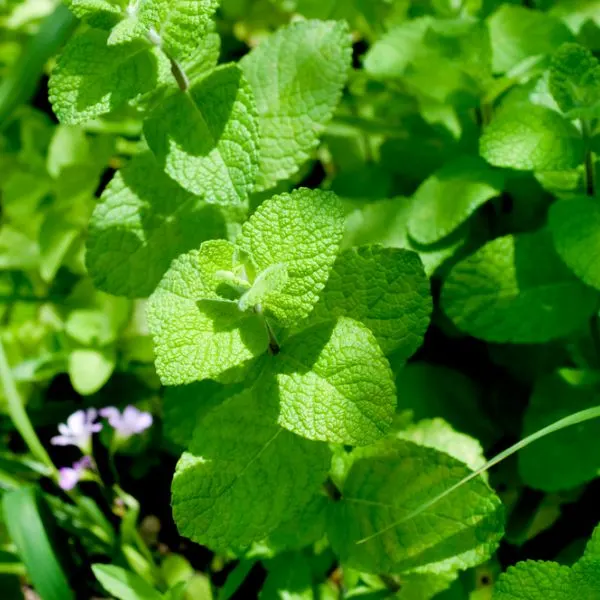
- Scientific Name: Mentha suaveolens
- Other Names: Pineapple mint, round-leaved mint, woolly mint
The species of mint plant known as apple mint is found in the Mediterranean region and in the western and southern parts of Europe. It is usually grown as a cooking herb or for ground cover.
Apple mint is also called woolly mint as its leaves and stems are covered in fine hairs.
The plant has long stalks and large, soft leaves. Its aroma has been described as slightly fruity, with nuances of apple but less mint flavor.
Like other mint plants, the leaves of apple mint plants can be eaten raw or after being cooked. They are used to make salads, add flavor to already cooked foods and make several kinds of tea.
As for its health benefits, apple mint has been helpful in treating or providing relief to headaches, fever, colds, cramps, flu, digestive disorders, shock, stress and fatigue, travel sickness, epileptic seizures, acne, and asthma.
2. Asian Mint
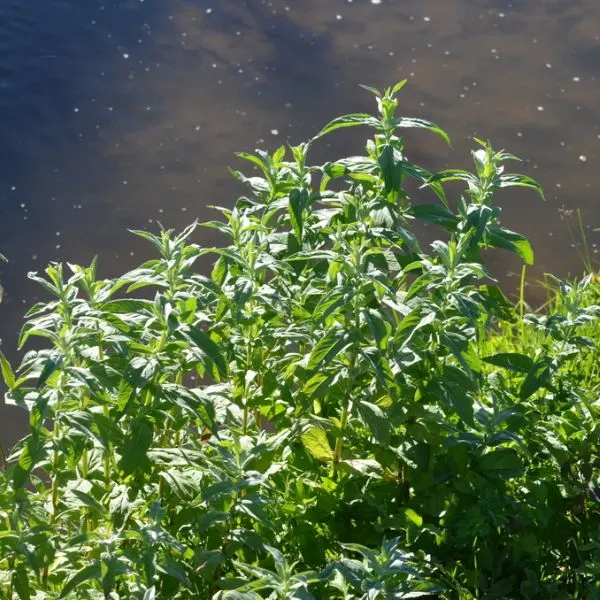
- Scientific Name: Mentha longifolia var. asiatica
- Other Names: Mentha asiatica, Mentha asperata, Mentha kopetdaghensis, Mentha vagans
Asian mint is a variegated species of silver mint or horsemint.
It was at first given full species status until it was reduced to a variety of the silver mint species. This type of mint is found in Central Asia, Western Asia, and China.
This mint plant has an erect stem, few branches, and oblong leaves. The branches, leaves, and stems are woolly but only slightly.
Its leaves may be folded and curved downwards, its sepals and flowers purple-red in color.
Leaves of Asian mint plants are typically used to make herbal tea. This tea is traditionally used to treat minor illnesses like fevers, headaches, and digestive problems.
Aside from being used for medicinal purposes, Asian mint leaves are used, raw or cooked, to flavor salad and other cooked foods.
3. Australian Mint
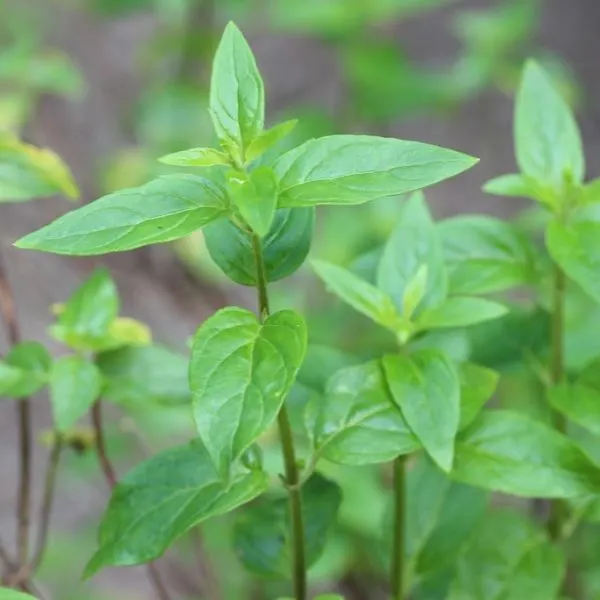
- Scientific Name: Mentha australis
- Other Names: Australian river mint, native peppermint, native river mint, river mint
The Australian mint is found in every state and territory of eastern Australia, save for Western Australia.
It is also found in some parts of New Zealand. This mint plant is soft, very aromatic, often sprawling, and sometimes erect.
Its flowers are usually pink or white in color. Australian mint is an invasive species that is best grown away from other plants; otherwise, it may take over the others.
Its edible parts, the leaves, may be used raw, dried, or cooked.
The mint plant tastes and smells like a combination of peppermint and spearmint with a peppery undertone. It may be used in the preparation of salads, tea, sauces, desserts, and cocktails like Mojito or mint julep cocktails.
4. Bergamot Mint
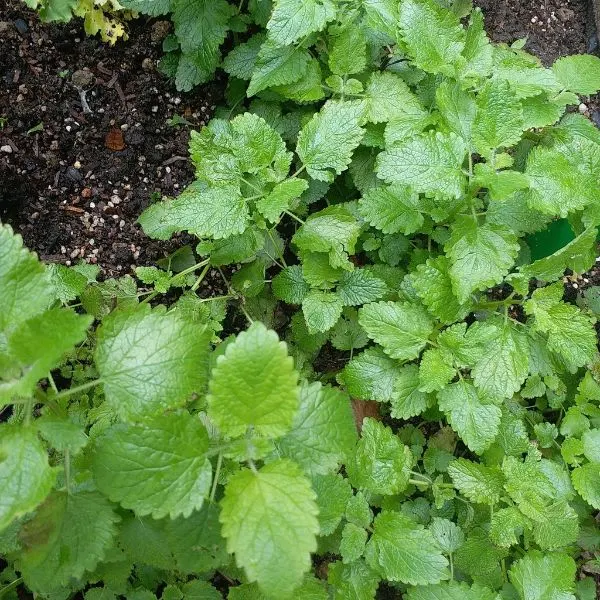
- Scientific Name: Mentha citrata
- Other Names: Eau de cologne mint, orange mint
Bergamot mint is usually cultivated for its oil.
This oil has a strong odor and for this, it is used well in the perfume industry. This type of mint occurs in fertile areas of subtropics, in such places as northern India.
This type of mint plant has a soft, minty, and citrusy smell. It helps reduce inflammation (is anti-inflammatory), relieve pain (is used as an analgesic), and relieve gas in the alimentary canal (is carminative).
Tea made from fresh or dried bergamot mint leaves is used traditionally in the treatment of stomach aches, nerves, nausea, and parasitic infections. It is beneficial for the digestive system, sore muscles, nausea, and travel sickness.
The oil extracted from bergamot mint plants is calming, uplifting, and relaxing when diffused, added to a warm bath, or used for a massage. The plant’s entire aerial part can be eaten, both as a herb and in foods like pizza and salad.
5. Canada Mint

- Scientific Name: Mentha canadensis
- Other Names: American wild mint, East Asian mint, Sakhalin mint, American Cornmint
Canada mint is native to North America and eastern Asia.
The plant has bluish or slightly violet flowers, with leaves that grow opposite each other and an upright stem. The stem is hairy and leaf stalks are short.
This mint plant is cultivated all over the world for producing menthol and essential oils.
When crushed or pinched, it smells quite like peppermint. Its leaves may be used raw, after drying, or after being cooked.
The leaves of the Canada mint plant are used in the making of mint jelly, mint tea, and mint leaf candy. Mint tea may be taken for bad breath, hiccups, or toothache.
Its essential oil is used in medicine and as an insect repellent.
6. Chinese Mint

- Scientific Name: Mentha haplocalyx
The species of mint plant known as Chinese mint is native to China.
It is used in making herbal tea. Unlike some mint plants whose leaves only can be eaten, the entire part of this particular plant that is above the ground is edible.
The flowers of Chinese mints are pale lilac in color. The toothed leaves of this plant are oval in shape.
When this type of mint is used to make tea, the tea tastes pleasant. It is used more for herbal than culinary purposes.
In Chinese herbal medicine, Chinese mint is used to treat several sicknesses. It helps in the treatment of colds, sore mouths and tongues, toothaches, fevers, diarrhea, dysentery, headaches, sore eyes, and some congestive problems.
7. Corsican Mint
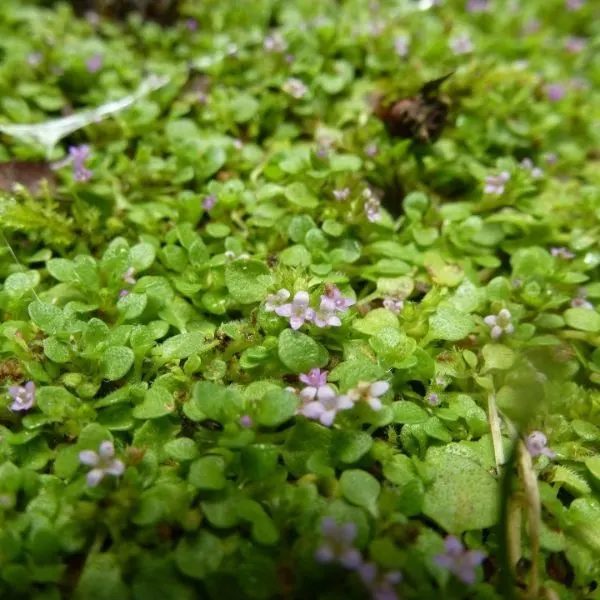
- Scientific Name: Mentha requienii
- Other Name: Creeping mint
Corsican mint occurs in Corsica, Sardinia, Montecristo Island, Portugal and the British Isles.
Its other common name was given to it because the plant is spreading and low-growing. It has round leaves, narrow stems, and a strong minty smell.
This type of mint plant is grown as a ground cover in gardens but is not sturdy enough to hold itself up in places that people often walk by. The bright green leaves of Corsican mint may be added to flavor drinks, ice cream, and several pastries.
Like other mint plants, this kind provides several health benefits and is used for medicinal purposes. It is used as an antiseptic, to help break fevers, soothe headaches, reduce the effects of digestive disorders, and provide relief from several minor illnesses.
8. Dahurian Thyme
- Scientific Name: Mentha dahurica
Dahurian thyme is a species of mint that largely occurs in Asia.
It is found in Siberia, the Far East of Russia, Japan, and the northeastern part of China. This herb has showy, fragrant flowers and strong-smelling leaves.
Dahurian thyme is grown as ground cover as it is a low-growing and matting plant. It is also used as a culinary and medicinal herb.
Essential oils are gotten from this plant and used for antimicrobial and antioxidant purposes.
9. Garden Mint
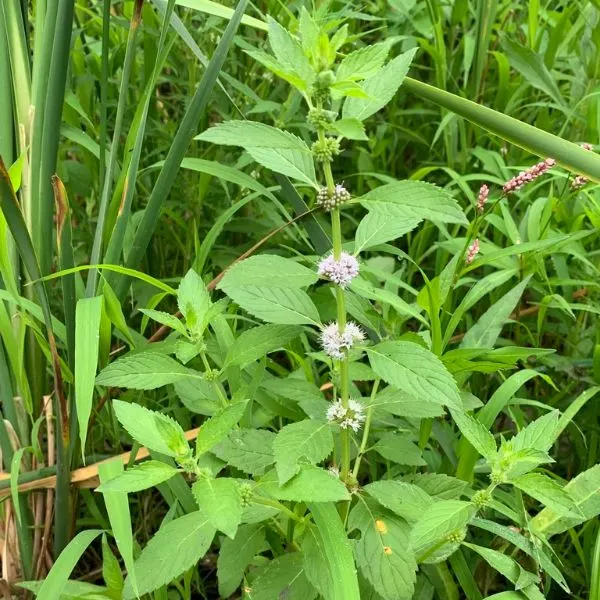
- Scientific Name: Mentha sachalinensis
Garden Mint is a mint species with bright green aromatic leaves and small purple flowers.
The leaves of the plant are used in cooking. They are used in the making of mint sauce and several other sauces, to flavor drinks and to make mint tea.
10. Japanese Mint

- Scientific Name: Mentha arvensis var. piperascens
- Other Names: American corn mint, brook mint, corn mint, Japanese oil of peppermint
Japanese mint is a mildly fragrant plant with soft, hairy, and round leaves that smell like apples when rubbed or touched.
Its flowers are small and pale blue-purple in color. The plant repels harmful insects and attracts useful ones.
The essential oils from this plant give it a sweet minty aroma. Japanese mint may be used as an ornamental plant, an antiseptic, a herbal remedy for minor illnesses, and a solution to digestive problems and disorders.
11. Hart’s Pennyroyal
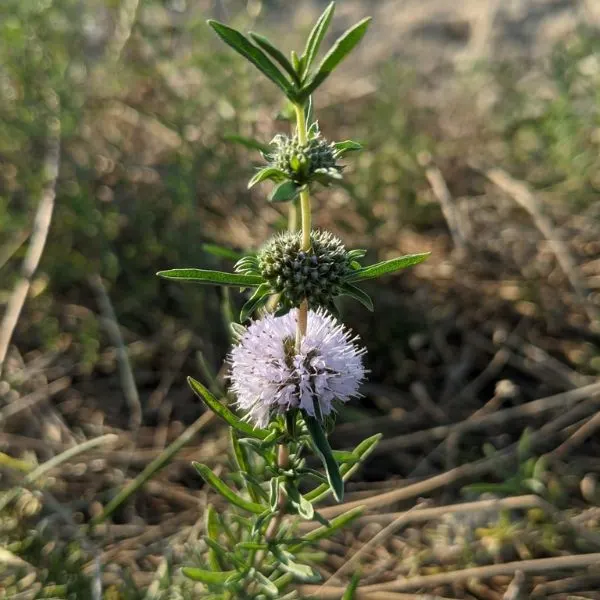
- Scientific Name: Mentha cervina
- Other Names: Hyssop-leaved mint, narrow-leaved pennyroyal, stag mint, water spearmint
The type of mint plant known as Hart’s pennyroyal is grown in the region of the Mediterranean Sea. The range of this plant is across the southwest of France, to the Iberian peninsula, to Azores, Morocco, and Algeria.
This mint plant has a strong and distinctive scent. It is a sprawling herb with fine lance-shaped leaves and flowers that are pale blue to lilac in color. The essential oils produced by it are known to have several culinary and traditional medicinal uses.
Hart’s pennyroyals help with nausea, digestion issues, and some respiratory problems. The plant is used as an antibacterial, antifungal, antioxidant, antiseptic, carminative, and febrifuge (a medicine that helps with fever by reducing body temperature).
In cooking, this type of mint may be used whole, fresh, or dry. It can be added to cheese, sauces, salads, soups, and stews.
It may also be used in making traditional Portuguese fish dishes and several alcoholic beverages.
12. Large-Flowered Mint
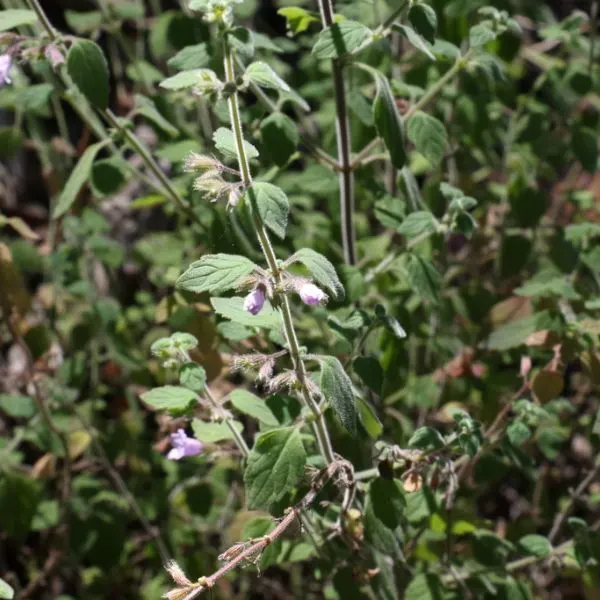
- Scientific Name: Mentha grandiflora
This type of mint is found only in the eastern part of Australia, although its distribution is highly disjunct. It is small, with its flowers pale lilac-purple and its scent strong, resembling that of pennyroyal.
It is one of the species of mint plants that are not used in cooking food. Its taste has been described as fiery, bitter, very unpleasant, and nauseous.
It may however be used as a substitute for peppermint for medicinal purposes.
13. Menthe de Perse
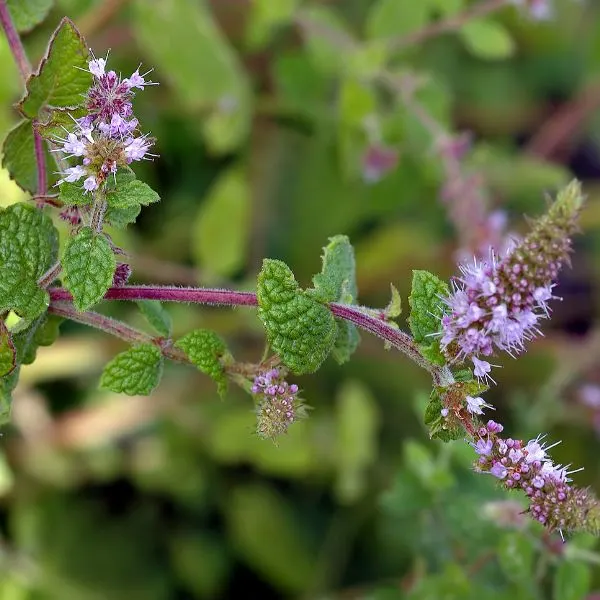
- Scientific Name: Mentha gattefossei
- Other Names: “Fliyyo dial jbel” (Arabic), “Menthe de Gatefossé” (French)
Menthe de Perse is a type of mint endemic to Morocco’s Atlas Mountains. It is harvested mainly for its essential oils but has been used for several purposes in traditional herbal medicine, pest control, and the cooking of food.
This creeping plant has broad and sessile leaves which may be linear or oblanceolate in shape.
The flower petals of this plant are whitish, lilac or purple in color. Each calyx has a whitish apical spine on it.
Menthe de Perse has both medicinal and culinary uses. It is consumed in Morocco for the improvement of general health and as an antioxidant.
It is also used as an insect repellent. This aromatic herb is used as a flavoring in teas and other foods.
14. Native Pennyroyal

- Scientific Name: Mentha satureioides
- Other Name: bush mint, creeping mint
Another true species of mint plant is the native pennyroyal.
It is native to New South Wales, Queensland, South Australia, Victoria, and Western Australia. It grows in clumps and is used as a groundcover herb.
It is a small and delicate species with tiny white flowers. It has both culinary and medical benefits. It may be used to make salads, sauces, sorbets, and teas.
In traditional herbal medicine, it is used to provide relief for cold and flu symptoms. Native pennyroyals are also used to make insect repellents and as a fragrant ingredient in homemade scrubs and lotions.
15. New Zealand Mint
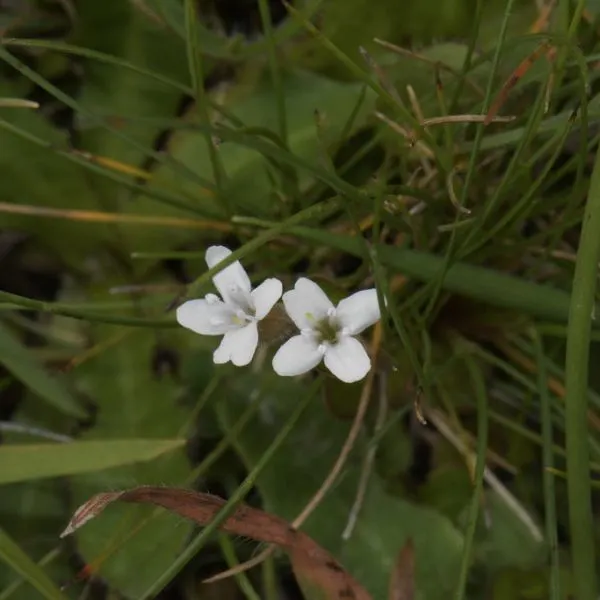
- Scientific Name: Mentha cunninghamii
- Other Names: Mentha cunninghamia, hīoi (Māori), Māori mint, moki or mokimoki (Māori)
The New Zealand mint species is native to four New Zealand islands: Chatham Island, North Island, South Island, and Stewart Island. It possesses a minty aroma like other mint plants but is quite different physically.
It is a very slender, wiry, and often matted plant with many branches. The leaves of the New Zealand mint are broad, with short stalks or nearly sessile. The flowers of this plant are small and white in color.
The Māori use this plant as a diaphoretic (to induce sweating or perspiration). Its leaves are also used for their scent and to add an essence to cooked food.
16. Pennyroyal
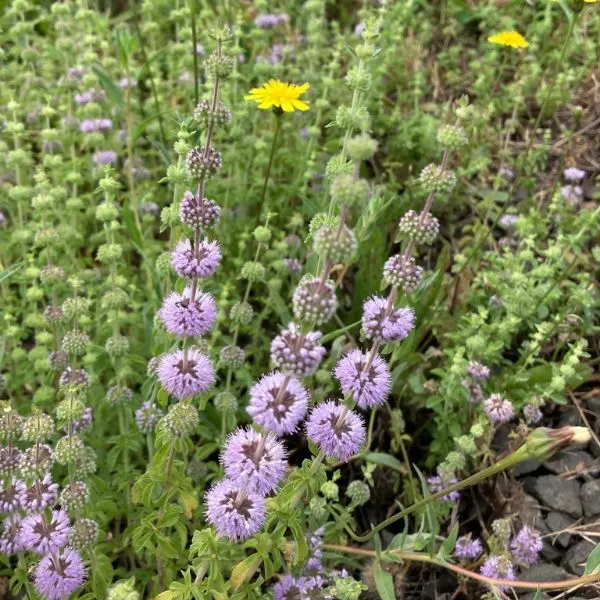
- Scientific Name: Mentha pulegium
- Other Names: Mosquito plant, pennyrile, pudding grass
Pennyroyal is a type of highly aromatic mint plant used traditionally to season pork dishes and as a medicinal herb.
It is native to Europe, North Africa, and the Middle East. When the leaves of this plant are crushed, they emit a very strong odor like that of spearmint leaves.
The flavor of this plant has been described as pungent and acrid. In past times, pennyroyal has been added to food, wine, and herbal teas as a flavoring. Extract from the plant has been used to stimulate menstruation or induce abortion.
In more recent times, the oil extracted from pennyroyals has been discovered to contain a compound that is poisonous, particularly to the human liver. Also, the flavor of the plant is considered too strong and so it is no longer in use as much as a food flavoring.
Pennyroyals may be infused into hot water to make strong mint tea. This tea is not to be drunk regularly or consumed by children and infants.
There are serious safety concerns surrounding the use and consumption of this mint plant.
It is however still in use as an antiseptic, an insect repellent, a remedy for skin diseases, and the treatment of gout, poisonous bites, mouth sores, common cold, pneumonia, and fatigue.
17. Princess Mint
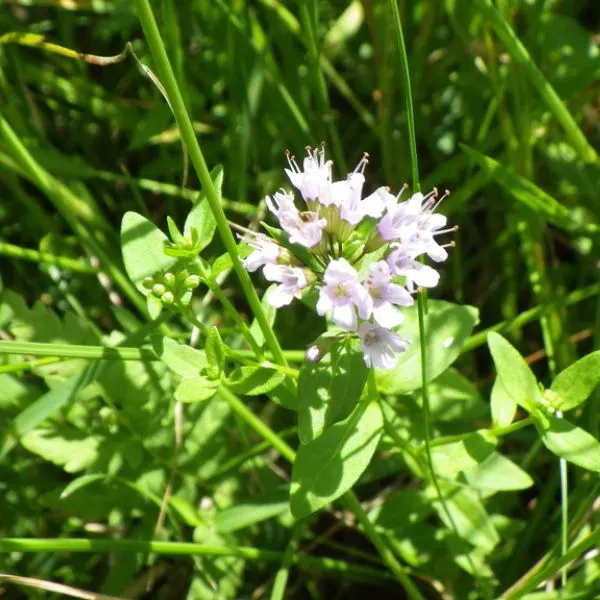
- Scientific Name: Mentha japonica
Princess mint is a fairly small mint plant endemic to the Japanese islands of Hokkaido and Honshu.
It is quite rare and its scent resembles that of pennyroyal. Its flowers may be any color from white to pale violet.
Princess mint is used as an aromatic and medicinal herb, not much as a culinary herb. It is also used to make an ointment for treating mastitis in cows.
18. Royle’s Mint
- Scientific Name: Mentha royleana
- Other Non-English Names: Jangli podina, Kala podna, Nari wailani, Pahari pudina, Safaid podina, Tulasi paate, Valenay
Royle’s mint is native to eastern Afghanistan, the Himalayas, Kashmir, and Pakistan.
It is also grown in northwest Asia, Europe, and parts of China. Physically, the plant bears much semblance to silver mint or horsemint.
The leaves of Royle’s mints are narrow, oblong-elliptic in shape, and most discolored. They are usually attached directly to the plant without stalks (they are sessile) and they have slender spikes.
The flowers of the Royle’s mint plant are small and whitish in color.
The entire plant has a strong mint aroma. It is used to mask bad breath or freshen one’s breath, and to prepare sauces and salads in its region of origin.
The mint plant is used for more herbal or medicinal purposes than culinary, however. It is used as a carminative and has been used to treat several foods- or water-borne diseases like cholera, diarrhea, dysentery, and vomiting.
Chest problems, stomach aches, flatulence, flu, abdominal worms, and high blood pressure are also traditionally treated with parts of this plant or a combination of some part(s) of this plant and other herbs.
19. Silver Mint
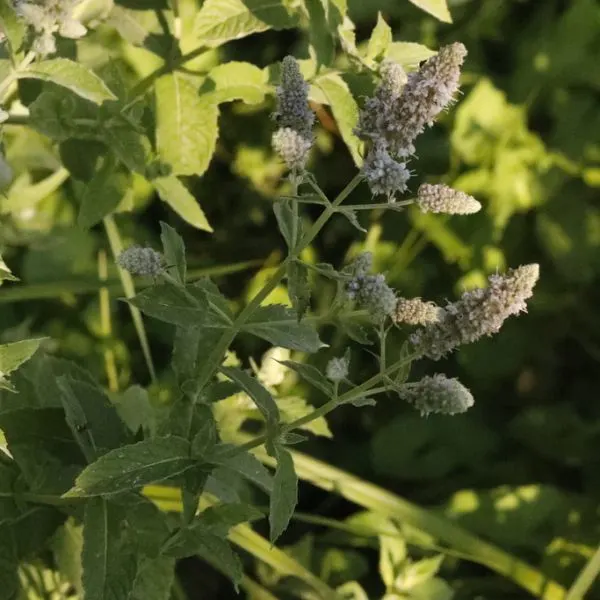
- Scientific Name: Mentha longifolia
- Other Names: Fillymint, horsemint, St. John’s horsemint
The type of mint plant known as silver mint is native to west and central Asia, North and South Africa, and Europe, except Britain and Ireland. Its scent resembles that of peppermint and its long flowers are lilac, purplish or white in color.
This type of mint plant serves as an antioxidant and helps with tummy troubles. It may be used to make a juice for soothing the throat, a tea for masking bad breath, and a remedy in combination with vinegar for dandruff.
It also has several medicinal benefits.
20. Slender Mint
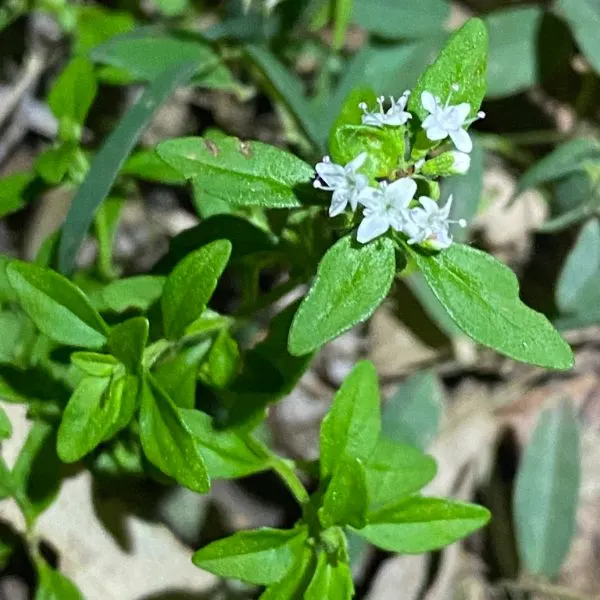
- Scientific Name: Mentha diemenica
Slender mint is a mint species native to Australia. It is grown in New South Wales, Queensland, South Australia, Tasmania, and Victoria.
Its broad, flat leaves have a strong mint smell when crushed and may be widely varied. The leaves may be hairy or hairless, with their margins smooth or toothed. The flowers may be pink, mauve, purple, or white.
It is a low-growing plant with typically matting stems and branches. Its stems occasionally grow upright.
Leaves of the slender mint plant have culinary uses. They may be used as a flavoring and to garnish cool drinks, in a manner similar to that of other more common mint plants.
21. Spearmint
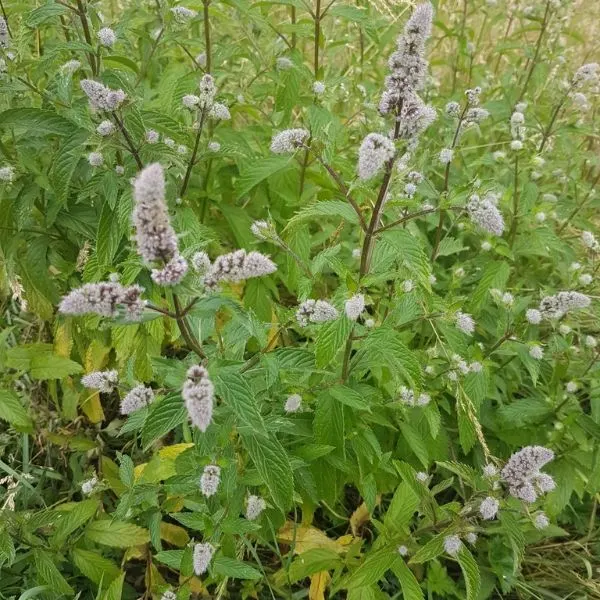
- Scientific Name: Mentha spicata
- Other Names: Mentha crispata, Common mint, curly mint, lamb mint, mackerel mint, native spearmint
The spearmint species is native to Europe and the temperate part of southern Asia.
It is one of the types of mint most widely used for culinary purposes as it has a light, delicately sweet flavor. Its leaves are bright green and spear-shaped.
Spearmint has a minty odor with sweet hay-like undertones. It tastes minty and carvone-like with weedy nuances.
It is used to make popular products like chewing gum and toothpaste, although it has culinary and medicinal uses as well. This plant is used to treat bad breath, spasms, and flatulence, respiratory, and gastrointestinal problems.
It has carminative, diuretic and sedative properties. It may also be taken to balance hormones, reduce blood sugar and help digestion.
The edible parts of the spearmint plant are its leaves and they may be used raw or cooked. They are used to flavor salads or cooked foods, make a mint sauce, and make herbal tea.
Essential oil is made from the leaves and flowers of this plant to flavor sweets, drinks, and ice cream.
22. Watermint
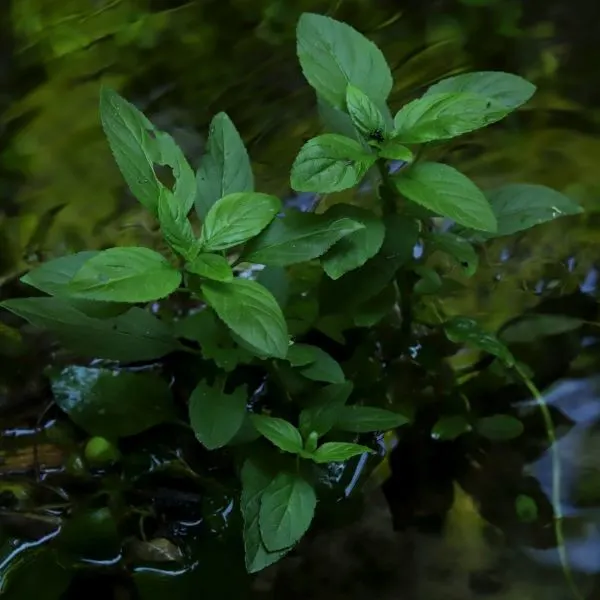
- Scientific Name: Mentha aquatica
- Other Name: Marsh mint
Water mint occurs in northwest Africa, southwest Asia and the European regions of England, Ireland, and Northern Ireland. It has so much menthol in it that people find it too minty to use as flavoring in a dish.
The flower petals of water mint plants are small and colored from pink to lilac. Their hairy or hairless stems are green or purple, and their broad leaves are green with purple undertones.
All parts of this plant have a distinct minty odor.
Water mint, like many other types of mint, can be used to make jellies, herbal teas, and syrups, or to flavor hot dishes and salads. The plant is toxic to humans, dogs, cats, and horses but only in large quantities.
23. Wild Mint

- Scientific Name: Mentha arvensis
- Other Names: Corn mint, field mint, Japanese peppermint
Wild mint is native to temperate regions of Europe, western and central Asia, the Himalayas, eastern Siberia, and North America. Due to its high menthol content, it has a sharp and penetrating mint scent and a strong, slightly bitter minty taste.
Wild mint is very commonly used as a flavoring or scenting agent. It is usually added to salads and other cooked foods for its essence.
The plant is also used for its numerous health benefits in traditional medicine. It is used as a household remedy to treat patients with hypertension and heart diseases.
A juice made from wild mint leaves is known to soothe diarrhea and dysentery. The leaves help to reduce the effects of stomach problems and allergies.
Types of Hybrid Mint Plants
24. Chocolate Mint

- Scientific Name: Mentha x piperita f. citrata
Chocolate mint is considered a hybrid of bergamot mint and water mint, or water mint and spearmint.
It is used as a culinary herb or as ground cover. This mint variety has nuances of chocolate in its taste and scent.
The flavor of chocolate mint is spicy and minty with cocoa and vanilla undertones.
The plant is very aromatic, related to other aromatic mint varieties. Its leaves are green with veins of burgundy and its stem is also brown in color.
The essential oils from chocolate mint help in the treatment of nausea, cramps, and indigestion.
The leaves can be used as culinary herbs, in the making of several desserts. They can be used to add flavor to ice cream, mousse, and custards.
Chocolate mint leaves are also made use of in preparing beverages. They add a subtle cocoa aroma and flavor to cocktails.
They may also be used to garnish different beverages and desserts.
25. Cuban Mint
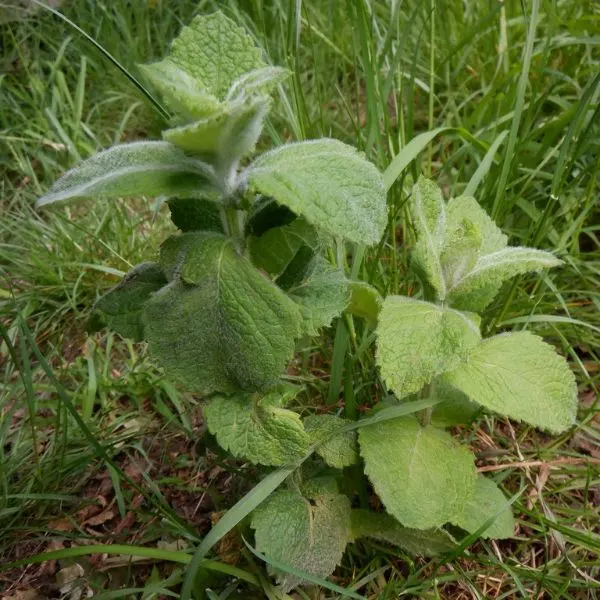
- Scientific Name: Mentha x villosa
- Other Names: Mentha alopecuroides, Mentha cordifolia; M. spicata x M. suaveolens, apple-mint, Bowles’ mint, mojito mint
This herb is a hybrid of spearmint and apple mint.
Cuban mint is grown for the sweet, less pungent flavor of its leaves. Also called mojito mint, it is an important ingredient in the making of mojito cocktails.
The leaves of the Cuban mint plant may be used to flavor lamb dishes, make herbal tea, and garnish cooked food, adding essence.
26. False Apple-Mint
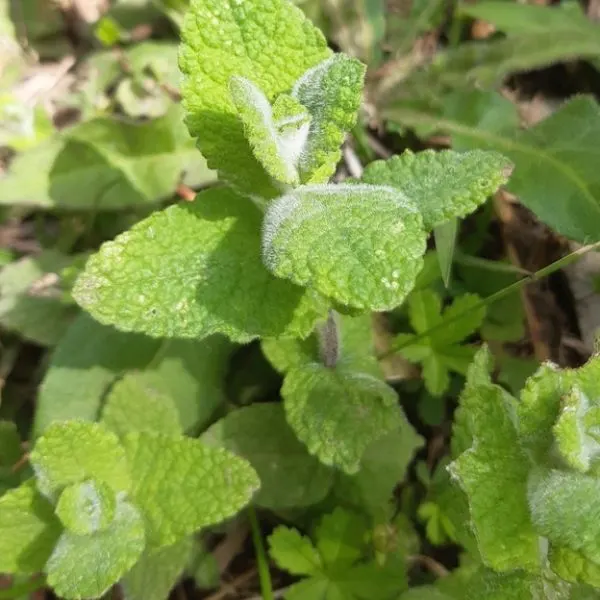
- Scientific Name: Mentha x rotundifolia
- Other Names: M. longifolia x M. suaveolens, Mentha spicata var. rotundifolia, bigleaf mint
False apple-mint is the result of a cross between silver mint and apple mint.
It is native to northwest Africa, Europe, and Central Asia. The leaves of the plant are used for several culinary purposes.
It is used as a flavoring for savory and sweet dishes, salads, greens, sauces, grilled meats, desserts, and fruit drinks. It is an active ingredient in mint sauce, also infused into and used to add essence to tea, ice tea, and fruit juice.
27. Ginger Mint

- Scientific Name: Mentha x gracilis
- Other Names: M. arvensis x M. spicata, redmint, Scotch spearmint, Scotchmint, Bushy Mint
Ginger mint is a hybrid between wild mint and spearmint.
It is grown mainly for its essential oil and used to flavor spearmint chewing gum. The smell of the plant wards off rodents so it is placed around grains to keep pests away.
The essential oil from the ginger mint species is used to flavor Scotch spearmint chewing gum and candies. Its leaves may be used to flavor meat in some cultures.
Digestive issues, fevers, and headaches are some ailments that this plant is used to cut or soothe.
28. Peppermint
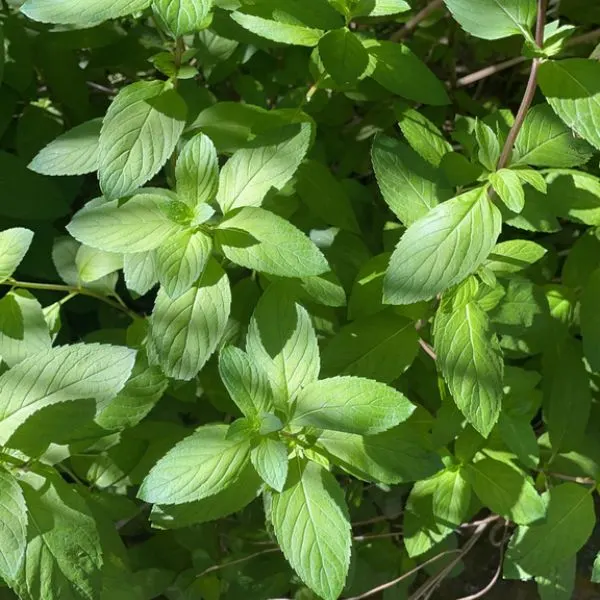
- Scientific Name: Mentha x piperita
- Other Name: M. aquatica x M. spicata
Peppermint is a hybrid mint species from the cross between water mint and spearmint. Although it is widely grown in other places across the world, this plant is native to parts of Europe and the Middle East.
Peppermint has a minty, uplifting, and pleasant aroma. Due to its antibacterial and antiseptic properties, it has a cooling effect on the skin, cleanses it, and soothes the inflammation and irritation that acne may cause.
Other health benefits of peppermint are soothing of common cold, headaches, and digestive problems, remedy for Irritable Bowel Syndrome, and treatment of sinus infections. Its oil is also applied to the skin to help with headaches, itching, joint pains, and muscle aches.
The strong flavor of peppermint is used in salads and other cooked foods. It is used to add essence to hot and cold drinks, meat, salads, and several desserts.
29. Red Raripila Mint

- Scientific Name: Mentha x smithiana
- Other Name: M. aquatica x M. arvensis x M. spicata, Redstem Mint
Red raripila mint is a hybrid species resulting from a cross between water mint, wild mint, and spearmint.
30. Sharp-Toothed Mint
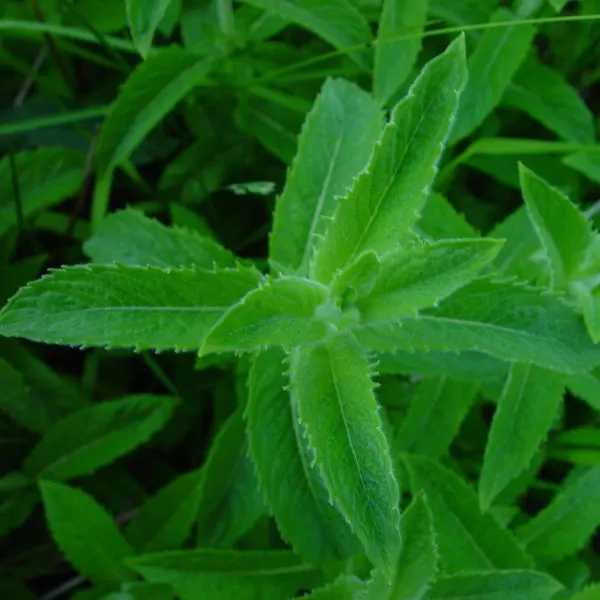
- Scientific Name: Mentha x villosonervata
- Other Name: M. longifolia x M. spicata
This last type of hybrid mint plant is the result of a cross between silver mint and spearmint.
31. Grapefruit Mint
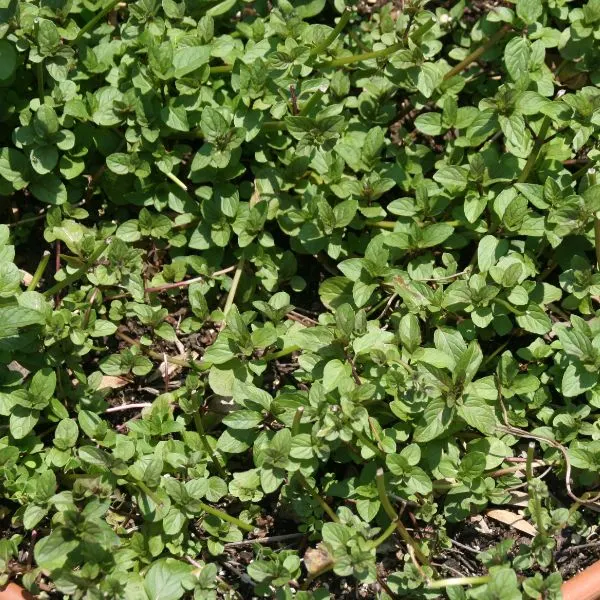
- Scientific Name: Mentha × piperita f. citrata ‘Grapefruit’
- Other Name: n/a
Grapefruit mint plant is a unique hybrid mint species known for its citrusy aroma and flavor, resembling the scent and taste of grapefruit. This plant is native to parts of Europe and the Middle East, and it has become popular worldwide for its culinary and medicinal uses.
Grapefruit mint has a refreshing, fruity, and uplifting aroma. Its antibacterial and antiseptic properties make it beneficial for the skin, providing a cooling effect, cleansing, and soothing inflammation and irritation caused by acne.
Other health benefits of grapefruit mint include relief from common cold symptoms, headaches, and digestive problems. It is also used as a remedy for Irritable Bowel Syndrome and as a treatment for sinus infections. The oil extracted from grapefruit mint can be applied to the skin to alleviate headaches, itching, joint pains, and muscle aches.
The unique citrus-mint flavor of grapefruit mint makes it a versatile addition to various dishes. It is used to enhance the taste of hot and cold beverages, meats, salads, and an array of desserts. The leaves can also be used in salads and cooked foods, adding a refreshing twist to traditional mint recipes.
Video About Different Types of Mint Plants
FAQs
Are there different types of mint plants?
Yes, different types of mint plants exist. Thirty (30) of them, both true and hybrid species, are listed above.
The species listed in this article are apple mint, Asian mint, Australian mint, bergamot mint, Canada mint, Chinese mint, Corsican mint, Dahurian thyme, garden mint, Japanese mint, Hart’s pennyroyal, large-flowered mint, Menthe de Perse, native pennyroyal, New Zealand mint, pennyroyal, princess mint, Royle’s mint, silver mint, slender mint, spearmint, water mint, wild mint, chocolate mint, Cuban mint, false apple-mint, ginger mint, peppermint, red raripila mint, and sharp-toothed mint.
Are All Types of Mint Plants Edible?
Yes, all types of mint plants are edible. However, it is important to note that some people may have an allergic reaction to mint, so it is always a good idea to use caution when consuming mint or introducing it into your diet for the first time.
What kind of mint is edible?
Most mint plants are edible.
Of all the kinds listed above, only pennyroyals are advised not to be consumed. Water mint may cause harm but only when taken in large quantities.
Which mint is most used in cooking?
Spearmint is the type of mint most used in cooking.
How many different kinds of mint are there?
The exact number of mint species is not known. However, there are twenty-five (25) to thirty (30) kinds of mint plants currently known.
Are there any poisonous mint plants?
Yes, some mint plants are poisonous.
Pennyroyals are harmful when not carefully consumed. In large quantities, water mint is also toxic to humans and some other animals.
Which mint is best for tea?
There are many different types of mint that can be used to make tea, and the best one for you will depend on your personal preferences. Here are a few types of mint flavors that are commonly used to make tea:
1. Peppermint: Peppermint is the most common type of mint used to make tea. It has a strong, refreshing flavor that is perfect for relaxing and soothing the stomach.
2. Spearmint: Spearmint has a milder, sweeter flavor than peppermint and is often used to add a refreshing twist to tea blends.
3. Lemon mint: Lemon mint has a fresh, citrusy flavor that pairs well with other herbs and fruits. It is a great choice for a refreshing summertime tea.
4. Apple mint: Apple mint has a sweet, fruity flavor that is perfect for adding a unique twist to tea blends.
Ultimately, the best mint for tea is a matter of personal preference. Experiment with different types of mint to find the one that you like the best. You can also try blending different types of mint to create your own unique tea blend.
Conclusion
Mint plants are aromatic herbs with several known health benefits and culinary uses. They are perennial (they live for several years) and they reproduce via rhizome (a horizontal underground stem that continuously grows and puts out shoots at intervals).
These plants are largely invasive as a result of their rhizomes and so they are best grown in the absence of other plants. Mint leaves may be eaten raw, after being dried, or after cooking. The entire aerial part of some mint plants is edible but only the leaves of some can be eaten.
The exact number of species of mint plants is not certain because there are no exact distinctions between species. About twenty-five (25) true species are estimated to be in existence, however.
Mint plants may be used in flavoring food, making traditional herbal medicine, producing insecticides and insect repellents, making traditional cosmetics, improving the scent of rooms and people’s bad breaths, and aromatherapy.
Check out more types of things

Lihna Padock
Saturday 19th of November 2022
Thank you for the valuable information on the varieties of mint. I'm interested to know if there are any mint variety that grows in the tropical islands of the Pacific Ocean? Your response is greatly needed and appreciated.
brock.yates@brockly.org
Thursday 24th of November 2022
Mint is a pretty hardy plant, so the setup for success will depend on your soil and placement. You can also use a greenhouse as another alternative if the weather is too cold during winter. "Mentha australis" could be a good candidate for you as one example.